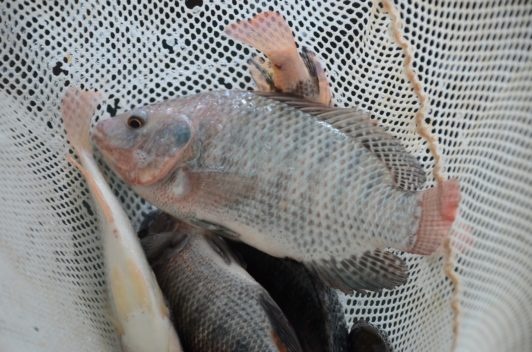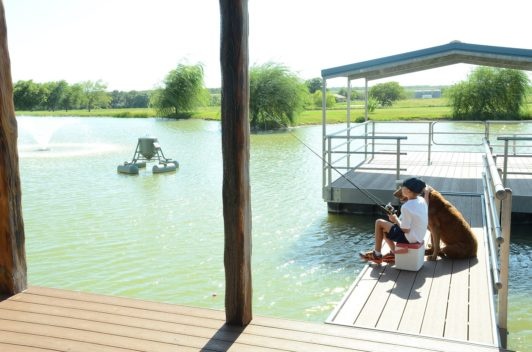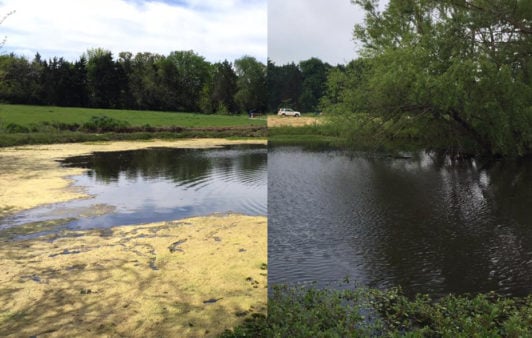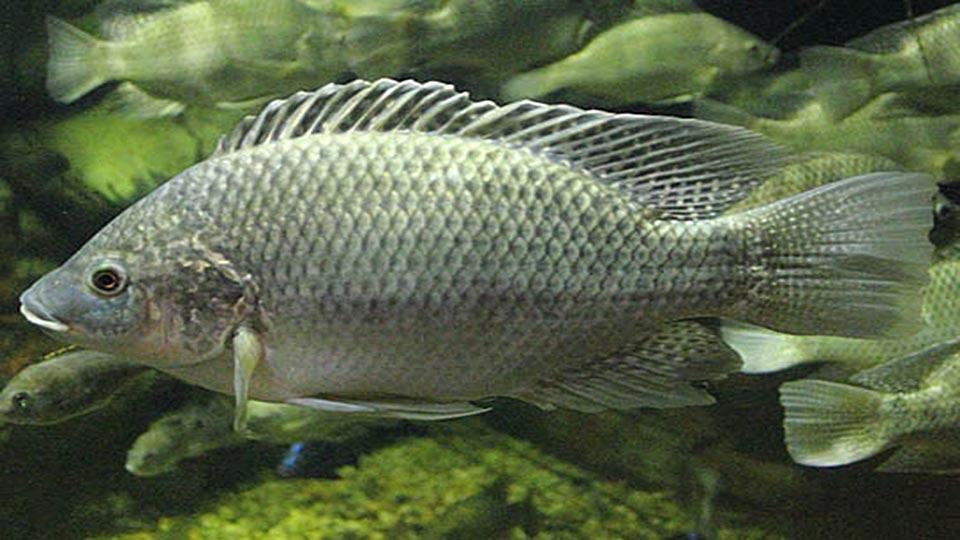Every pond owner has had to, at one time or another, deal with slimy, green algae growing out of control. While there are many different solutions to help combat the green nuisance, most eco-conscious land managers choose biological control over chemical treatment.
For the Southern part of North America, stocking Mozambique Tilapia offers an exceptional, low-cost alternative to repeated chemical applications. The following are 6 reasons why Mozambique Tilapia, an algae eating fish, are a good option for your pond.
Cost
Most chemicals are relatively pricy, and depending upon the size of your pond, application rates may wind up eating a larger hole in your bank account than the actual algae you are trying to treat. Chemical products come in both liquid and granular formulations—of which the latter is typically the most expensive.

Mozambique Tilapia, stocked at 10 lbs to the acre, provide a longer lasting and usually less expensive option for control of filamentous algae. For example, one treatment for a one-acre pond can require up to 4 gallons of liquid Cutrine (a popular and effective chemical option) which can run anywhere between $175.00 to $200.00—for a professional service.
A one time seasonal stocking of Mozambique Tilapia for the same pond at 10 lbs to the acre would cost $135.00 (if purchased from Pond King Inc.). There may situations where both biological and chemical controls are required, however biological control is typically the less expensive option.
Environment
Not all chemicals are directly harmful to your fish. However, eco-conscious and savvy consumers see the advantage of choosing options that place less chemical components into their aquatic systems. Most algaecides, like liquid and granular Cutrine, utilize chelated copper as the primary active ingredient. While not overtly toxic, chelated copper can build up and bio-accumulate within a pond system.

Mozambique Tilapia control filamentous algae, or green pond algae, by eating it and converting it to energy for biological processes such as reproduction.
Efficiency
Typically, Mozambique Tilapia will start to consume filamentous algae post-stocking, once the acclimation period is over. This period can be as few as a couple of hours and at most a few days. Most pond owners typically start to see a noticeable reduction in the growth of filamentous algae within one month of stocking.
Once water temperatures increase to a reproductive ideal, spawning takes place. The fish that were stocked increase in number, and therefore, increase the quantity of hungry mouths that eat the algae. Chemical controls only kill algae when the concentration of active ingredient is sufficient enough. Biological controls, such as Mozambique tilapia (a pond cleaning fish) pretty much continuously reduce the amount of filamentous algae—and continue to do so even after reproduction. They are an efficient solution for biological control of filamentous algae.
Benefits to Predatory Fish
Largemouth Bass are perhaps the most common pond species, aside from Channel Catfish and Bluegill. Keeping them fed and in good condition requires abundant forage resources.
Stocking Mozambique Tilapia as biological control of filamentous algae has the added benefit of providing piscivorous (fish eating) species, like Bass, with an abundant forage supply. Smaller Tilapia that hatch within the pond are an easy meal for most Bass.

Reproduction by Tilapia occurs often, and the results are small juvenile Tilapia that make easy targets for a hungry Bass. Therefore, stocking Tilapia to consume filamentous algae also benefits a pre-existing Bass population by providing high protein prey items once spawning commences.
Store-bought vs. Semi-wild
If you have ever ordered Tilapia at a restaurant, the chances are good that the fish you ate was purchased from a wholesale fishmonger who got their fish from a hatchery that produced fish by cramming hundreds of them in a tank and pumping them full of antibiotics to keep fungal infections at bay—Yum!
However, Mozambique Tilapia that are stocked to control filamentous algae in ponds and lakes revert to a wild state and take on the physical characteristics of a wild population. These fish taste a whole lot better than store-bought, pre-packaged, already frozen Tilapia fillets that are used at restaurants and can be purchased from local grocery stores. Farm to table tastes best.
Population Control
The good news about Tilapia is that the population increases post-stocking due to reproduction. The even better news about Tilapia is that winter temperatures guarantee that that the population will not take over your pond.

Water temperatures below 55 ° F are lethal for the species. Stock them in the spring, let them work for you throughout the summer and fall, and then let winter take care of the rest. Our clients find often that just before the water temperature drops to about 56-57 ° F, Tilapia become sluggish and easy to harvest. Take advantage of the seasonal temperature change and harvest as many as you can.
So, if you are thinking about stocking a fish to help clean your pond, think about Mozambique Tilapia. They are a cost effective, efficient, beneficial, good-tasting, temperature regulated species that acts as a solution to get rid of your pond algae.
They clean, they swim, they reproduce—it’s the complete fish package! For information regarding fish stocking plans, contact a Pond King Biologist today, or stop by our fish barn from March through June to see our complete species line-up for fish stocking needs.




